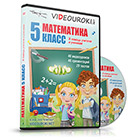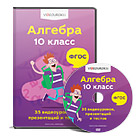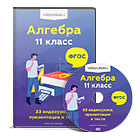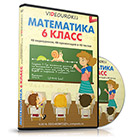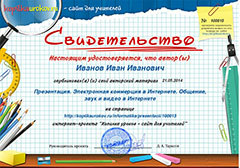Вечерняя (сменная) общеобразовательная школа при Федеральном казенном учреждении «Исправительная колония № 6» пророплодпло лдкллрукпл лцалдукцлдло ждпаждолжд лоалдолдк лолд
- Меню
- Главная
- Дошкольное образование
- Начальные классы
- Астрономия
- Биология
- География
- Информатика
- Математика
- Алгебра
- Геометрия
- Химия
- Физика
- Русский язык
- Английский язык
- Немецкий язык
- Французский язык
- История
- Естествознание
- Всемирная история
- Всеобщая история
- История России
- Право
- Окружающий мир
- Обществознание
- Экология
- Искусство
- Литература
- Музыка
- Технология (мальчики)
- Технология (девочки)
- Технология
- Физкультура
- ИЗО
- МХК
- ОБЖ
- Внеурочная работа
- ОРК
- Директору
- Завучу
- Классному руководителю
- Экономика
- Финансовая грамотность
- Психологу
- ОРКиСЭ
- Школьному библиотекарю
- Логопедия
- Коррекционная школа
- Всем учителям
- Прочее
Создайте Ваш сайт учителя Курсы ПК и ППК Видеоуроки Олимпиады Вебинары для учителей
- Главная
- Математика
- Прочее
- Активные методы и приемы обучения на уроках математики
Активные методы и приемы обучения на уроках математики
Просмотр содержимого документа
«Активные методы и приемы обучения на уроках математики»
Задание 1
Максимальное количество баллов – 10
Read the text and translate it into Russian.
Advertising is an act of making a product, service, a job vacancy, an event etc publicly known. It is a non-personal form of communication through paid means of information distribution with a clearly stated source of financing.
Publicity money go to various means of information distribution: mass media, radio and television, outside exposition (posters, signs, aerial advertising); direct mail, souveniers (match boxes, notebooks, calenders); in transport; catalogues; directories (telephone directories, guides) etc. .
The advertising has many applications. A corporate/image advertising is used to form a lasting image. A product advertising is used to distinguish a certain brand of products compared to other brands of the same trade class. Rubric advertising is used to distribute information about services, events or some sale. Clearance advertising is used to announce of some clearance sale. Explanatory advertising is used to uphold some idea. The advertising can also be national, regional, local, it can be meant for a wide range of consumers, for a certain industry, for a retail trade etc. .
Companies with strong advertisement departments often resort to the services of advertising agencies. The agencies normally have four main departments: production department which elaborates and produces advertisements; advertising media department responsible for a choice of means and placement of advertisements; research department studying the demand; commercial department dealing with commercial aspects.
The agencies get a commission, usually a 15% discount of the value of the purchased advertising space. For instance, the agency buys an advertising space for 60 thousand dollars. The magazine draws up an invoice for 51 thousand dollars on the agency (60 thousand minus 15%), the agency in its turn charges the client the full amount of 60 thousand dollars keeping back 9 thousand dollars.
Making advertisement is a five-stage process which includes such stages as:
setting the objectives (informing, persuading, reminding),
drawing up a budget,
the appeal (the forming of the idea, the choice of forms of appeal, implementation),
the choice of means of information distribution (the choice of the range, frequency, specific advertising means, the schedule),
assessment of the results.
The Objectives should be clearly stated no matter whether it's informing, persuading or reminding.
Informing prevails on the stage of introducing a new product on the market.
Persuading forms a special demand for a certain brand of products. Some persuading adverts tend to be comparative, i.e. they tend to show advantages of one brand Compared with the other one of the same trade class. Comparative adverts are used to promote such categories of goods as deodorants, tooth paste, tires cars. Reminding is important to make consumer remember the product but not to persuade or inform. It's a kind of advert that approves of the right choice, e.g. happy buyers adoring their newly bought car.
The Budget can be drawn up according to such principles as "on the level of competitors", "out of certain objectives and goals" etc.
The Appeal presupposes the forming of the idea, choice of forms of appeal and implementation. Any advertiser should keep in mind the four AIDA points: attention, interest, desire, action, - consequent stages of the consumer's response before buying.
Forming of the idea: the idea can be formed by way of combining types of satisfaction that a customer anticipates – rational, aesthetic, social or a satisfaction of pride of ownership – with types of emotional experience.
The choice of forms of appeal: the appeal is supposed to inform the receiver of something interesting and desirable. Also, it should convey an idea of the exceptional nature of the product compared to the other brands of the same trade category. The appeal should be very similar and demonstrable.
The implementation of the appeal is very important when advertising such similar goods as cigarettes, coffee and beer. The impact depends not on what has been said but the way it has been said. Usually the advertiser elaborates the text stressing the content, goals, integrity and the right tone.
(4)The Choice of Means of Information Distribution depends on setting the following questions: stating the range of frequency and the impact of the advert: choosing a specific advertising means and the right schedule. Most companies prefer a pulsing schedule.
Assessment of the Results presupposes the evaluation of the communicative and commercial effectivity before, during and after the publicity campaign.
Yearly, American firms spend over 61 billion dollars in average for publicity campaigns, e.g. to promote the goods in 1995 the three leading American advertisers "Procter and Gamble" and Philip Morris" and "General Motors" spent 2,7 –2,4 –1,9 billion dollars respectively. In 1995 same companies "Procter and Gamble" and "Philip Morris" were the leading advertisers on the Russian market after the leaders of 1994 the companies "MMM" and "Russkaya nedvizhimost". The ASAs – Advertising Standards Authorities – monitor hundreds of advertisements weekly as these are the organizations to protect the public from advertisements that may contain misleading or false information.
There are two major types of advertisements: classified and commercial. Classified advertisements are short advertisements in a newspaper or magazine placed by people offering or asking for a product or service, or who are offering or looking for employment. Commercial advertisements are advertisements on television, radio or in a cinema.
Besides there are keyed advertisements. Many advertisers resort to keyed advert as they have a code printed on the reply coupon identifying the magazine or newspaper where it appeared. The advertiser can then check which magazine are the most useful source of advertising. The companies place keyed advertisements to help with market research.
By their location in mass media or other advertising means the advertisements can be divided into solus and semi-solus. Solus is an advertisement or poster that is separated from any competing advertisements or posters, e.g. the only one on a page or in a solus position on the front page, i.e. a full-page advert. Semi-solus (semi) is an advertisement which appears on the same page as another advertisement but is not placed next to it. N.B. Do not confuse semis as semi-solus advertisements and semis as semi-finished goods.
Vocabulary
publicity,n – реклама
aerial – надписи в небе
directory,n – справочник
corporate/image ad – престижная реклама
product ad – товарная реклама
rubric – рубрика, заголовок
clearance ( clearance sale) – распродажа
explanitory –объяснительный
uphold,v - отстаивать
resort,v – прибегать к чему-либо
elaborate,v - разработать
discount,n (of) – скидка
draw up an invoice – выписать счет
keep back – удерживать
implementation,n – выполнение, внедрение
range,n – диапозон, размах, охват
satisfaction,n – удовлетворение
anticipate,v – ожидать, предвкушать, предвидеть
demonstrable,adj – доказуемый
integrity,n – прямота, честность, полнота, целостность
evaluation,n – определение качества, оценка
monitor,v – контролировать.следить
сlassified– классифицированный
reply coupon – ответный купон
solus – реклама на всю газетную (журнальную) полосу
commercial (ad) – коммерческая реклама
1. Give English equivalents to the words and word-combinations. Make up your own sentences using them.
Творческий отдел, средства рекламы, размещение рекламы, коммерческий отдел, иметь дело с коммерческими аспектами, изучать спрос, получать комиссионное вознаграждение, стоимость закупленных средств рекламы, взять с клиента определенную сумму денег, удержать один миллион рублей, четко обозначенный источник финансирования, средства массовой информации, средства распространения рекламы, рекламировать в каталогах и справочниках, объявление о распродаже, отстаивать какую-либо идею, запоминающийся образ, зависеть не от того, что сказано, а оттого, как сказано, степень воздействия рекламы, эффективность рекламы, пульсирующий график, основные виды рекламы, классифицированные объявления, коммерческая реклама, показ коммерческой рекламы, реклама по телевидению, радио или в кино, содержать лживую информацию.
2. Choose the correct definition.
1. A promotion is …
Advertising or other activity intended to increase the sales of a product.
An advertising or publicity campaign for a particular product.
The giving or receiving of a higher position or a more important job.
The budget is …
A plan of income and expenditure for a particular period of time.
An amount of money to be spent on particular business activities or equipment.
The annual plan of income and expenditure produced by the government.
The persuading is …
Persistent request to do or not to do something.
An imperative way of persuading someone.
A polite request.
3. Fill in the blanks with prepositions where necessary.
Resort ___ the help ___ advertising agencies.
Study ___ the demand.
A 15% discount ___ the value ___ the purchased means ___ advertising.
To buy an advertising space ___ $50,000.
To draw ___ an invoice ___ $50,000 ___ the agency.
A form ___ communication.
The Implementation ___ the appeal.
Such similar goods ___ coffee, cigarettes, beer.
The extent ___ effectivity.
To depend ___ what has been said.
To state ___ the range of frequency.
To choose ___ a schedule.
To protect ___ the public ___ misleading advertisements.
An advertisement ___ television.
To be placed ___ people offering or asking ___ a product ___ service.
To look ___ employment.
A code printed ___ the reply coupon.
The most useful source ___ advertising.
To contain ___ information.
To stipulate ___ the contents and tasks.
4. Read the text again and say if these statements are true or false.
An advertisement for a sales manager is a kind of message for the attention of the sales manager of the company.
The brand image can be created and influenced by advertising and packaging.
To promote someone manager of the department means pulling strings to help get that person a higher position in a company.
Qualitative market research is the examination of people's attitudes and opinions and how these influences what, where and how much they buy.
5. Give all possible combinations with the following words.
advertising, demand, publicity, promotion, deal
6. These eight verbs are commonly used in advertising. Choose the right one to complete each sentence. e.g. 1=appeal
attract boost spend launch
promote Persuade appeal project
The copywriter created a slogan which would ___ to a wide cross-section of consumers.
The agency wants to ___ a campaign targeting the under-16 market.
The consumers we want to ___ are professionals who purchase up-market products.
All advertising must ___ the right product image.
Giving away free badges helped to ___ ice-cream sales to children.
The number of TV commercials in a campaign depends on how much the client wants to ___ and who he wants to reach.
The function of advertising is primarily to inform and to ___.
Our plan is to ___ the new product across a wide range of media.
7. Choose the words and word-combinations on the right which have the same meanings as the ones on the left.
advertising campaign usage
products image advertising
to distribute proveable
capital good publicity campaign
application goods
demonstrable to disseminate
corporate advertising investment good
direct mail advertising a goods wagon
a goods van to deal with a customer
to deal with a client resident mail advertising
8. Answer the following questions.
What is advertising?
Where does the publicity money go?
What are the applications of the advertisement?
Give a couple of examples of some kind of advertisement.
What is the structure of the advertising agency?
What are the functions of various departments of the advertising agency?
How does the advertising agency work?
What are the stages of making an advertisement?
What are the kinds of objectives that can be set up on the first stage?
When is informing the objective?
Why is reminding important as an objective?
What are the principles of drawing up a budget?
What does the appeal presuppose?
What does the forming of the idea imply?
When is the implementation important?
What does the stage of the choice of means of information distribution involve?
How do you understand a pulsing schedule? Give an example of a pulsing schedule.
What is an ASA?
What are the two major types of advertisements?
Why do you think it is useful to place keyed advertisements?
What is the difference between the solus and semi-solus advert?
If a retail chain is to maintain its profits, it is essential that stock moves in and out of store quickly. Here department store personnel are discussing the eight different ways of encouraging turnover listed below. Which is each person talking about? e.g. 3=gimmicks
introductory offers money-off coupons competitions
jingles free samples gimmicks
demonstrators window display
A: Repeating _(1)___ with intermittent soft music are what people are most influenced by, in my opinion.
B.:I am in favour of __(2)____ because we can advertise the prizes all over the shop.
C.:We want something unusual to make our stores different from others, ___(3)___ are a good idea, ballons, stickers, ball point pens and so on.
D.:What about having ___(4)___on all new own brand lines for a period of a week, say a 5%or a 10% discount.
E.:Couldn’t we concentrate more on our own-brand goods and provide ___(5)___ so that people will return to our shops.
F.:I think frequent ___(6)___ changes are a good bet. For example, bedrooms one week bathrooms, etc.
G.:We could get in product ___(7)___ who would draw the crowds. They could give away ___(8)___ of productd.
Answers: introductory offers – 4
money-off coupons – 5
competitions – 2
jingles – 1
free samples – 8
gimmicks – 3
demonstrators – 7
window display – 6
10. People can find good and bad features in advertising. Read the following and separate the ideas into two columns for good and bad points.
Give true information; do not talk about the products; defects; make you buy one thing instead of another; (are) misleading; show life unrealistically; put pressure on consumers; famous people endorse products; teach you how to get the best value for your money; (are) truthful; help you choose best products; help to improve your taste; (are) impossible to check; people seem to be happy consumers; (are) creative/ informative/silly/annoying/clever/funny; full of humour/fantasy; convince people to buy things they don't need; present an honest, realistic image of a product.
11. What do you think of advertising?
I don't take advertising seriously!
On the one hand …
But on the other hand…
When I …
Besides, in advert …
What's more …
Advertisements are misleading!
They …
More than that …
They also …
In brief …
The best thing on TV is the adverts.
Watching commercials for me is like …
Commercials …
They ..
Best of all …
Besides, …
Задание 2
Максимальное количество баллов - 5
Text I. Read and translate the following text.
DOES ADVERTISING INCREASE PRICES? The two conflicting answers to this question may be summarized as follows:
Advertising is very expensive. Whoever pays the cost must pass it to the consumers. Therefore, advertising increases prices.
Advertising increases sales. The more a manufacturer produces, the lower his cost per unit. This allows him to reduce prices.
IS THE COST OF ADVERTISING JUSTIFIED? The arguments against the second statement above are as follows:
Advertising will increase sales only if it is successful. An unsuccessful campaign will merely increase costs. Also, a manufacturer may spend thousands of pounds simply to defend himself against another manufacturer's advertising. He incurs huge costs merely to stand still.
There must be a limit to the amount of sales. The population can eat only a certain amount of breakfast cereal, for example. If the sales of one brand increases, the sales of another must decrease.
Advertising is not honest when there is no genuine competition. For example, there are many brands of soap powder, all apparently fiercely competing against one another. In fact all the soap powders are made by three manufacturers.
The defenders of advertising say that (in addition to reducing prices) advertising is necessary for the following reasons:
To inform the public.
To encourage competition.To increase sales, advertising must offer lower prices and improved goods. Successful advertising will therefore ensure that the public gets the most efficiently produced goods.
To increase the standard of living. Advertising encourages people to buy goods which will make their lives easier and more enjoyable. Thus, if advertising increases the sale of washing-machines, the amount of household drudgery is reduced.
THE MORAL ASPECTS OF ADVERTISING. The aim of advertising is to persuade consumers, and in that respect it can be successful. It has been shown that, in spite of the huge cost, a two minute television "commercial" can produce an amazing response; the number of applications for a job advertised in a newspaper is often remarkable. One may therefore put the following questions about advertising:
Are people persuaded to buy things they cannot afford and which they do not really need?
If advertising increases the amount of smoking and drinking, is it a harmful practice?
Does sex appeal have to play a large part in advertising some products?
By publicising only favourable aspects of a product, is advertising honest?
PROTECTING CONSUMERS AGAINST ADVERTISING. Because of complaints that some advertising are misleading, offensive or morally wrong, the industry has set up his own body to deal with them. The Advertising Standard Authority will investigate complaints that an advertisement is misleading or offends against the British Code of Advertising Practice.
There has been instances where people have sent money in response to mail-order advertisements and then did not receive the goods or a refund of their money because the advertiser has become bankrupt. Members of the Newspaper Publishers' assocoation insure their readers against this risk.
merely – только, просто
incur – подвергаться, навлечь на себя
genuine – подлинный, настоящий
competition – конкуренция, состязание
fiercely – свирепо, сильно, неистово
encourage competition – поощрять, поддерживать
in that respect – в этом отношении
mislead,v (misled) – вводить в заблуждение
offend,v – оскорблять, вызывать раздражение
offensive,adj – обидный, отвратителный, противный
1. Answer the questions
1. Does advertising increase prices?
Why does advertising increase sales?
Why doesn’t advertising increase sales?
What is advertising necessary for?
Why do we speak about the moral aspect of advertising?
2. Speak about:
Advertising increase prices.
Advertising of alcohol and cigarettes.
The cost of advertising is justified.
Задание 3
Максимальное количество баллов - 5
Read and translate the following text.
In the world of advertising, colour has more impact than any other sense.. Indeed, some adverts rely upon colour instantly to communicate their meaning.
At this sophisticated level of communication a colour picture has been used to suggest attributes that the advertisers wish us to associate with the product. In the case of gold, the image promotes our search for wealth and richness.
Colour associations can hold a deeper significance. The blueness of lakes and the sea both offer new life and trigger primitive sexual associations.
Another use of colour lures future purchasers by placing the product slightly out of reach. This ploy uses orange-yellow of beaches and sunsets to entice our imagination to exotic places. This exploitation of colour fantasy sets Bacardi rum and Bounty bars on tropical islands and Marlboro cigarettes on a western prairie.
Colour functions as a weapon to encourage the impulse – buying majority. A closer look at the products and their packaging finds a basic colour language. Colour is enlisted to convey attributes of products that their manufacturers or processors would wish us to associate with them. For instance, various permitations of blue, white and grey are often employed to depict the purity, freshness and unadulteration of various brands of sugar, flour, salt and milk. Adding a touch of red to the package will increase a sense of power, such as with bleach or toothpaste. Greens and yellows project the freshness of vegetables and fruit.
Certain hues such as red, golden and green are known as the “appetite colours” and these are an important ingridient in the mass making of food. For instance, golden-brown is so appetising a food colour that the baking of bread and cereals is carefully controlled to achieve precisely the right colour.
A strong red is a common choice for the packaging of full-strength cigarettes, with milder blends being packaged in diluted greens, blues and purples.
Young and young-in-heart drivers believe that a red sport car will outperform those in other colours.
Black is the other high-speed colour for cars and one which is associated with VIPs and high status. Black clothes can bring a touch of class and black is also used to denote exclusivity in expensive goods such as designer furniture and high-tech electronics.
Orange is a power colour – the stronger the orange the greater its potency.
Green is the safe alternative. Green is also the colour of money.
Blue represents reliability and is wide-spread in the world of banking. Blue is also a common colour of air travel.
Purple is the colour of forbidden fruit but it is also naughty but nice. Its association with smoothness and excitement links it to Cadbury’s chocolates, Silk Cut cigarettes and exotic cocktails.
(From “The Colour Eye”, London, BBC, 1990)
1. Answer the questions.
What are the different colours used in advertising?
Can we somehow judge about the quality of a product according to the colour of a package?
What is blue associated with? Which colours are also asociated with freshness and purity?
Do colour associations have deeper significance?
Which colours represent power, strength and speed?
Which are “appetite colours” ?
What does purple mean?
If you are to advertise shampoo and soap which colours would you choose?
For an advertisement of a bank which colours would you choose?
2. Do you agree or disagree with the ideas of the text. Give your reasons.
Задание 4
Максимальное количество баллов - 10
CRISIS COMMUNICATION
Read and translate the article.
A good working relationship with the media is severely tested in times of crisis. All the rules and guidelines about working effectively with the press are magnified and intensified when something out of the ordinary occurs and thus becomes extremely newsworthy.
Here is a sampling of major crises that have hit various organizations:
The safety of Dow-Coming's silicone gel breast implants comes under fire from both the medical community and thousands of women who claim that they were harmed by the product.
Sears is charged by consumer agencies in several states for defrauding customers and making unnecessary repairs at its auto centers.
An outbreak of food poisoning, leading to the death of a 2-year-old, is traced to contaminated beef served byJack-In-The-Box restaurants in Washington State.
An activist environmental group claims that the pesticide Alar used on apples is a health hazard to children. The claim is featured on TV, causing a major drop in apple sales, affecting thousands of apple growers.
A Florida man claims that his wife's fatal brain tumor was caused by her frequent use of a cellular phone. He files a lawsuit and gets national exposure with an appearance on TV.
These situations, no matter what the circumstances are, constitute major crises because the reputation of the company, industry, or product is in jeopardy. Economic survival is at stake, and a company can lose millions of dollars overnight if the public perceives that a problem exists.
Johnson & Johnson, owner of the maker of Tylenol, saw the brand's market share shrink from 37 percent to barely 6 percent in a matter of days after capsules laced with cyanide killed seven people in Chicago. By the time it was established that someone had tampered with the product after it had reached store shelves, the ordeal had cost the company more than $50 million to recall the product and test all its manufacturing processes.
During such times of crisis, the media can be adversaries or allies. It all depends on how you and your organization manage the crisis and understand the media's point of view. Keep in mind some guidelines.
The key to successful dealings with the media during a crisis is to become a credible source of information. The following can be suggested:
Appoint a spokesperson whom the media can trust and who has authority to speak for the company. It also is a good idea to designate one central spokesperson so that the organization speaks with one voice.
Set up a central media information center where reporters can obtain updated information and work on stories. You should provide telephone lines, modular jacks so that reporters using computers can reach their offices, and facsimile machines. Provide food and transportation if necessary.
Provide a constant flow of information, even if the situation is unchanged or negative. A company builds credibility by addressing bad news quickly, when information is withheld, the cover up becomes the story.
Be accessible by providing after-hours phone numbers or carrying a cellular phone with you at all times.
Keep a log of media calls, and return calls as promptly as possible. A log can help you track issues being raised by reporters and give you a record of which media showed the most interest in your story.
Be honest. Don't exaggerate, and don't obscure facts. If you're not sure of something or don't have the answer to a question, say so. If you are not at liberty to provide information, explain why.
These guidelines reflect plain common sense, but when a crisis tuts, it is surprising how many organizations go into a defensive mode and try to stonewall the media. Dow-Corning, for example, got considerable negative coverage by treating the media as an enemy.
Corporate spokespeople accused the media of reporting only the "sensationalistic, anecdotal side of the breast implant story, which has unnecessarily frightened women across the country". At a news conference, the head of Dow's healthcare business continued the attack by telling the assembled reporters that they took "memos out of context and distorted reality". It would be an understatement to say that this is a poor way to get the press on your side.
Jack-In-The-Box also violated the tenets of crisis communications in the first days of the reported food poisonings. The company initially said "no comment" and then waited three days to hold a news conference, at which the company president tried to shift the blame to the meatpacking company.
There are two principles: accept responsibility and take action. Even if you are not directly, at fault the organization should take responsibility for its product and the public safety.
Johnson & Johnson did this with Tylenol, but Dow-Corning chose to defend its product even after evidence had mounted that the company knew the product had a history of causing medical problems. Experts also say that Jack-In-The-Box fumbled early on by not showing concern for the poisoned customers. The company would have won more public goodwill and favorable press coverage by more quickly offering to pay all medical bills, which it eventually did.
Two considerations can be emphasized in the crisis management plan:
Demonstrate your commitment to good corporate citizenship by taking prompt and decisive actions to control problems in your operations.
Communicate swiftly, constantly, and consistently to all appropriate audiences in clear, straightforward, nontechnical language.
Notes:
Dow-Corning - совместное предприятие химического концерна Dow Chemical Co. и компании по производству стекла и стеклянной посуды Corning Inc. Sears - компания по прокату автомобилей торговой фирмы «Сире» Роубак энд Ко (Sears, Roebuck and Co)
Jack-In-The-Box - сеть закусочных, торгующих гамбургерами. Рассчитана на обслуживание в автомобиле
Johnson and Johnson - химико-фармацевтическая компания. Выпускает широкий круг фармацевтических препаратов, в частности, Тайленол, патентованное средство от головной боли и простуды. В октябре 1982 г страну потрясли сообщения о случаях отравления со смертельным исходом, вызванного тем, что ненайденный злоумышленник подложил в капсулы тайленола цианистый калий. Жертвами стали восемь человек в г. Чикаго и в штате Калифорния. В результате этой трагедии федеральные власти выработали новые правила проверки выпускаемых лекарств.

1) Find the English equivalents in the text. Make up sentences of your own with them:
ремонтные работы; двухлетний ребенок; созвать пресс-конференцию; полки магазинов; что-то необычное; группа активистов, выступающая в защиту окружающей среды; показать по телевидению; частое использование; обстоятельства; за одну ночь; оплатить счета; подчеркивать; искажать действительность; привлечь прессу на свою сторону; освещение в прессе; пищевое отравление; клиенты; выступать от имени компании; вопросы, поднимаемые журналистами; обычный здравый смысл; обращаться с к.-л. как с врагом.
2) Find the words in the text which describe or mean the following:
not willing to answer questions directly -
a very bad or frightening experience -
the sudden appearance or start of war, fighting, or serious disease -
to become smaller in amount, size, or value -
to trick a person or organization in order to get money from them -
a very bad or dangerous situation that might get worse, especially in politics or
economics -something that may be dangerous or cause accidents, problems etc. -
someone who helps and supports you in difficult situations –
an attempt to prevent the public from discovering the truth about smth.-
an official written record of smth.-
to choose someone or smth.for a particular job purpose -
12. to refuse to give facts, evidence etc. -
13. a statement that is not strong enough to express how good, bad, impressive etc. something really is -
14. after a long time, especially after a long delay or a lot of problems -
15. to be responsible for something bad that has happened -
16. to have the right or permission to do smth.-
3) Complete the following sentences (survival; a lawsuit; fuels; hits; crises; charged; common sense; goodwill; promptly; tenets; coverage; to designate):
Get to know the journalists in your area before a crisis
"No comment" hostility.
He files .
Economic is at stake.
These situations constitute major .
6. Sears is by consumer agencies.
7. Return calls as as possible.
8. These guidelines reflect plain .
9. Jack-In-The-Box violated the of crisis communication.
10. The company would have won more public ___________ and favorable press ________.
4) Answer the following questions:
What is the key to successful dealings with the media during a crisis?
What authority should an appointed spokesperson have?
Why should a central media information center be set up?
Why should a constant flow of information be provided?
How can you be accessible at (in) afterhours time?
What sort of log must be kept?
Do organizations always follow these guidelines?
What happened during Dow Coming's crisis?
How did Jack-Tn-The-Box violate the rules of crisis communication?
10. In what way must an organization communicate to all appropriate audiences during a crisis?
Sum up the main idea of the text. Write down only one sentence.
Give a summary of the article.
Задание 5
Максимальное количество баллов - 5
Dressing for the age
The text below looks at fashion trends in Britain the previous century. Read and translate it, using the notes to help you, and then try to answer the questions at the end.
A photograph, taken at random in a busy city street on a Saturday, would tell an observer very little about the place, the season, the social class or the work done by the people, so diversified have the clothes worn by the British become. One can make the generalization that people over 50 tend to dress more traditionally and formally, at least when on a visit ‘town’, whereas the population under the age of 45 to 50 presents a variety of costume that, at its extreme, turns the street into fancy-dress parade. There is no uniformity of skirt length, trouser width, or of style in general beyond some vague similarities of detail that allow one to characterize some as ‘punks’, others as ‘Sloane Rangers’ or as executive types.
This century has seen rapid changes in fashion, as in every other aspect of life. The most radical change came in women’s clothing at the turn of the century – loose, less constricting dresses falling to just above the ankle marked the more active way of life that women were beginning to pursue. In contrast, men’s clothes at this time settled into the style of drab colours and conservative cut that was to remain as the only acceptable way of dressing until the 1960s.
With the outbreak of war in 1914 fashion came to a halt for four years. Men and women, both in the army and in civilian life, were involved in the war effort and, consequently, wore either uniform or the severely practical clothes that restrictions of time and of availability of fabrics imposed upon them. The fashion known as the ‘hobble skirt’ was short-lived. Introduced just before the outbreak of war, it consisted of a very narrow, floor-length skirt that was draped around the body in such a way that it opened at the front a little below the knee. The skirt was not to exceed a width of 70 centimetres at the ankles, and forced the wearer to walk as if hobbled. It was an anachronism.
Since 1914there have been at least two attempts to persuade women to wear ankle-length skirts again: the first came in the Thirties when long, flowing skirts and square-shouldered dresses in silk and other fine materials replaced the waistless, knee-length garments of 1926 and 1927. Men’s clothes also underwent a change, albeit slight one. The extremely wide Oxford bags of the Twenties became narrower and the more daring young men began leaving off their waistcoats.
Clothes rationing during the Second World War induced many women to take up home dress-making, and man-made fibres such as rayon provided a cheap alternative to cotton and silk. Fashion at this time emphasized the shoulders with padding and skirts were worn shorter than previously. Also the trousers, which had first been worn by women in the previous decade now came into their own. Men’s fashions changed very little during this period, and the rationing of clothing imposed restrictions on the degree of choice available to both sexes.
The period from the late 1940s to the present day has seen a large number of styles. The more extravagant ones, like the New Look of 1947, when as much as 70 metres of material could be used in a dress, were doomed to a short life in an increasingly work orientated society. (Odd that, in contrast, the reaction to the First World War had been a skirt, in 1924, that required just one metre of fabric!) A year after the Second World War ended, and for purely practical reasons, the most enduring fashion of the 20th century first appeared in Britain: denim jeans arrived from the USA.
1966 saw the start of unisex fashions and men’s liberation from drab-coloured uniformity in dress. Clothes were clearly beginning to be designed with the young and very slim in mind and the large, imposing silhouette so sought after at the start of the century was now something to be ashamed of and dieted away. Fashions began to change so rapidly that they can now recur in one person’s life-time. For example, the mini-skirt resurfaced in 1983, some 18 years after its first period of popularity. At present the most diverse styles in men’s and women’s clothes coexist and dressing is seemingly more an art form than at any time since the beginning of the 20th century.
Notes:
‘town’ – This word is frequently used to describe the main shopping centre of a community or district. In outlying villages visits ‘to town’ are an infrequent occurrence often necessitate dressing up in one’s best clothes.
fancy-dress parade – A parade of people dressed in costume, perhaps representing animals, characters in history or fiction, or a well-known personality. Fancy-dress parades and parties usually take place as part of a major festival such as Christmas, Bonfire Night (November 5th), or Halloween (October 31st).
‘punks’ – The ‘punk’ style arose out of the anti-establishment punk-rock movement in the 70s. It is characterized in its extreme form by outlandish hairstyles – heads are often partially shaven or the hair is dyed in bright colours and made to stick up in spikes.
‘Sloane Rangers’ – This is a comparatively new expression in the English language. It describes the fashionable set of young people who live in the south-west London district of Chelsea, the centre of which is Sloane Square.
executive types – Smartly-dressed men and women who adopt the expensively tailored style of dressing usually associated with high-powered businessmen.
conservative – Used in this sense the adjective simply means moderate, traditional.
hobbled – Having one’s legs tied together with a short length of rope. The expression is usually applied to horses.
Oxford bags – Very widely cut trousers first worn by young men at Oxford University in 1925. ‘Bags’ is a rather old-fashioned slang word for trousers.
New Look – This fashion was characterized by dresses with a fitted bodice and three-quarter length sleeves with the skirt of the dress reaching to mid-calf level. The skirt was full and this was emphasized by swathes of material draped on the hips.
unisex – Designed to be worn by either sex.
Below you are given a number of questions relating to the text. Answer them by stating the period of time which you think is appropriate.
When did young men express a desire for less formality by not wearing waistcoats?
When were dresses designed that used as much as 70 metres of fabric?
What period is characterized by a diversity of styles?
When did the hobble skirt first appear on the fashion scene?
When were knee-length dresses with no marked waistline worn?
When did unisex fashion first become popular?
When can it be said that fashion came to a halt for four years?
When were man-made fabrics first used regularly?
There follow a number of comments and descriptions all connected with dress. Can you tell which are approving, which are critical and which are purely neutral observations?
Her outfit showed her attitude to colour: she combined bold greens and pinks in a dazzling but exciting way.
The young man was dressed in a startling suit of loud checks. The addition of a floral shirt made the final effect quite overpowering.
The most popular fashion this autumn is an outsized shirt which can be worn over other clothes like a coat.
The tight evening dress clung like a second skin, revealing every roll of flesh.
The model had chosen a pair of baggy pants and a crumpled silk shirt to achieve an attractive casual effect.
Задание 6
Максимальное количество баллов – 10
MEETING THE PRESS
P ress interviews, news conferences, media tours, and other kinds of gatherings provide excellent opportunities to communicate your message to a variety of audiences. They are more personal than just sending written materials and allow reporters to get direct answers from news sources.
ress interviews, news conferences, media tours, and other kinds of gatherings provide excellent opportunities to communicate your message to a variety of audiences. They are more personal than just sending written materials and allow reporters to get direct answers from news sources.
Company executives prone to stage fright may view direct one-to-one contact with the media as a nightmare. They fear that they will say something stupid, be misquoted, or be "ambushed" by an aggressive reporter who will slant the interview to imply that the organization is guilty of some wrongdoing.
Nevertheless, media interviews help the organization accomplish the objectives of increasing visibility, consumer awareness, and sales of services or products. The key is preparation.
Individual Interviews
Most press interviews are set up in advance. They can be initiated by you as the public relations representative, or they can be requested by a reporter who is looking for credible experts to fill out a story.
If a reporter calls requesting an interview, you should interview the reporter before the reporter interviews you. Some common questions are, "What's the nature of your story?" "Why did you call me?" "What are you looking for from me?"
By doing this kind of questioning, you can decide if you are qualified to answer the questions or whether someone else in the organization would be a better source. You may also decide that the context of the story is not appropriate for your organization and decline to be interviewed. For example, the reporter may ask you to comment on some topic that has nothing to do with your organization.
One danger in a telephone interview is that you're caught off guard and don't have time to formulate your thoughts. But before you know it, you and the reporter are chatting away like old friends about a number of topics. This is fine, but do remember that name and a quote will probably appear in the article or as a sound bite on a newscast. It may be accurate, or it may be completely out of context.
A better approach for a major interview, whether initiated by you or by the reporter, is to schedule it in advance. If you know the purpose of the story, this will help you prepare yourself or other spokespersons for the session.
There are some tips:
Define your key points. Know the three most important points you want to get across to the interviewer.
Anticipate difficult questions. Make a list of questions that might be asked and be prepared for them.
Rehearse. It is normal to feel uncomfortable when you're in the "hot seat" when reporters start questioning you. Practice making your key points and answering difficult questions. If you're preparing an executive for the interview, you role play as the reporter.
4. Follow up. After the interview, provide any material promised to the reporter. Respect a reporter's deadlines. Getting back to a reporter in several days often isn't good enough.
Another common suggestion is to provide reporters with company background materials in advance or at the time of the interview. This will help them get facts and names correct. Body language is also important: Be confident and relaxed, always look a reporter in the eye and never look away, keep your hands open, smile, and lean forward when you're talking.
News Conferences
A news conference is a setting where many reporters ask questions. It is called by an organization when there is important and significant news to announce, news that would attract major media and public interest.
Here is a list of instances that are appropriate for news conferences:
An announcement of considerable importance to a large number of people in the
community is to be made.A matter of public concern needs to be explained.
Reporters have requested access to a key individual, and it is important to give all media equal access to the person.
A new product or an invention of the public interest is to be unveiled, demonstrated, and explained to the media.
A person of importance is coming to town, and there are many media requests for interviews.
A complex issue or situation is to be announced, and the media need access to someone who can answer their questions.
The two major reasons for having a news conference are to give all media an opportunity to hear the announcement at the same time and to provide a setting where reporters can ask follow-up questions. Many announcements, particularly ones involving research breakthroughs, major corporate decisions, and crises, raise numerous questions as reporters seek information on all aspects of an issue or event.
Your role as a public relations professional is to determine when and if a news conference is needed. All too often, executives in an organization want to call a news conference just to stir up publicity and make routine announcements that can just as easily be handled with a news release. Not only is this an expensive proposition, but it also alienates the media, who have better things to do than attend news conferences where there is no news.
Scheduling a News Conference
The conference should be scheduled at a time that is convenient for the reporters -that is, with an eye on the deadlines of the media represented. In general, mornings or early afternoons are best for both print and broadcast media. This allows sufficient time for reporters to get stories in the next morning's daily or on the 6 p.m. news. If the primary audience is the trade press - reporters representing publications in a particular industry - late afternoon news conferences may be more convenient.
You should avoid Saturdays and Sundays, as well as major holidays. Most media operate with skeleton staffs on these days and hence don't have the personnel to cover news conferences.
Another consideration which often can't be planned for, is to schedule the news conference on a day when there aren't a lot of conflicting news events. It's always wise to avoid election days, for example.
Selecting a Location
A location for a news conference must meet several criteria. First, it must be convenient for the media invited and relatively close to their places of work. Second, the room selected must have the necessary facilities to accomodate both print and broadcast media.
Organizations often use hotels and conference centers for news conferences, as well as the corporate headquarters. It is important for the room to have plenty of electrical outlets, particularly for radio and television views. Television people may prefer a room on a ground floor near an entrance so that they can park a mobile communications center outside the room. In some cases, they will want to run cables from the truck to the room for live broadcast.
You should make the room available one or two hours in advance so that radio and television crews can set up. Have a general seating plan to make sure that the equipment doesn't obstruct the view or hinder the work of the print reporters. An elevated platform for TV cameras in the back of the room is helpful.
Another consideration is to have several smaller rooms reserved nearby for print and broadcast reporters to conduct an exclusive interview with a company representative after the general news conference.
I nvitations
nvitations
The invitation list should include all reporters who might be interested. It is better to invite too many than to omit some who may feel slighted. Invitations, which may take the form of a letter, should be mailed or faxed seven to ten days in advance. The telephone can be used if the conference is being scheduled on short notice. In any case, the invitation should state the time and place, the subject to be discussed, and the names of the principal spokespeople who will attend.
Invitations should be marked "RSVP" so that you can make appropriate decisions regarding the size of the meeting room, the number of press kits or other materials, and any special equipment that will be needed. Reporters are notorious for not responding to RSVPs, so it is usually necessary to phone them several days before the event as a reminder and to get a tentative answer.
Handling the Conference
It is important that a news conference be well organized, short, and punctual. It is not a symposium or a seminar. A news conference should run no more than an hour, and the statements by spokespeople should be relatively brief, allowing reporters time to ask questions.
You should brief your employers or clients on what they are going to say, how they are going to say it, and what visual aids will be used to illustrate the announcement. Reporters should receive copies of the text for each speech and other key materials such as slides, charts, and background materials. These are often given to reporters in the form of a press kit. Short bios with the accurate names and titles of the participants can be added to the press kit, as can general news releases.
Coffee, fruit juice, and rolls can be served prior to the opening of a morning news conference. Avoid trying to serve a luncheon or cocktails to reporters attending a news conference. They have deadlines and other assignments, they don't have time to socialize.
After the Conference
At the conclusion of the news conference the spokespeople should remain in the room and be available for any reporters who need one-on-one interviews. This can be done in a quiet corner or in a room adjacent to the site.
As the public relatiions person, you should be readily accessible during the remainder of the day in case reporters need more information or think of other questions as they prepare their stories. You should know where the spokespeople are during the day and how they can be reached, just in case a reporter needs to check a quote or get another.
Another duty is to contact reporters who expressed interest but were ultimately unable to attend. You can offer to send them the printed materials from the news conference and, if you have recorded the news conference, offer excerpts of videotape or sound bites. Another possibility is to arrange a one-on-one interview with one of the spokespeople.
1 ) Find the English equivalents in the text. Use them in sentences of your own:
) Find the English equivalents in the text. Use them in sentences of your own:
быть компетентным; сформулировать мысль; цель ч.-л.; знающие специалисты; обычные вопросы; предоставить прекрасные возможности; служащие компании; источник (информации); прокомментировать ч.-л.; не иметь ничего общего с ч.-л.
получить доступ; значительная личность; сложная проблема; предоставить возможность; одновременно; главная причина; коллективные решения; определить ч.-л.; обнародовать; слишком часто; следовательно; день выборов; сравнительно; штаб-квартира; в конце комнаты; неподалеку; предпочитать; ежедневная газета; достаточно времени; избегать.
2) Find the words in the text which describe or mean the following:
1. changes in your body position and movements that show what you are feeling or
thinking -
2. likely to do smth. -
3. nervousness felt by someone who is going to perform in front of a lot of people -
4. an important new discovery in something you are studying, especially one made
after trying for a long time -
5. to deliberately try to cause arguments or problems -
6. to do smth. that makes someone unfriendly or unwilling to support you -
7. done in order to find out more or do more about smth. -
8. to try to achieve or get smth. -
9. only enough workers or services to keep an operation or organization running -
10. to provide enough space for a particular number of people or things -
11. to make it difficult for someone to do something or for something to develop -
12. to plan that something will happen at a particular time -
13. a concert, sports events etc. that is seen or heard on television or radio at the as
me time as it is happening -
3) Insert the prepositions (for; on; with; in; forward; up; away; by; out). Translate the sentences into Russian:
Most press interviews are set advance.
They can be requested a reporter who is looking credible experts to
fill a story.
3. The reporter may ask you to comment some topic that has nothing to do
your organization.
4. Be confident and relaxed, always look a reporter the eye and never look ,
and lean when you're talking.
4) Answer the following questions:
Why are press interviews, news conferences etc, so important to public relations
people?Why may company executives sometimes view direct one-to-one contact with
the media as a nightmare?What is the key to a successful interview?
Who can initiate a press interview?
What questions should be asked before a reporter interviews you?
What can be achieved by doing this kind of questioning?
What are dangers of a telephone interview?
What should reporters be provided with in advance or at the time of the interview?
9. What is the best time for a news conference and why?
10. In which cases are late afternoons more convenient?
11. Why should Saturdays and Sundays be avoided?
12. What criteria should a location for a news conference meet?
13. What kind of room may television people prefer?
14. Why should the room be made available one or two hours in advance?
15. For what purpose may some smaller rooms be reserved nearby?
16. Who can give an exclusive interview?
5) Say what new facts and ideas you have learned from the texts about news con
ferences. You may start like this:
I didn't know that...
I knew... in general but...
The text mentioned... which was new to me...
Задание 7Максимальное количество баллов - 10
Public Relations
Effective public relations requires a knowledge, based on analysis and understanding, of all the factors that influence public attitudes toward the organization. While a specific public relations project or campaign may be undertaken proactively or reactively (to manage some sort of image crisis), the first basic step in either case involves analysis and research to identify all the relevant factors of the situation. In this first step, the organization gains an understanding of its various constituencies and the key factors that are influencing their perceptions of the organization.
In the second step, the organization establishes an overall policy with respect to the campaign. This involves defining goals and desired outcomes, as well as the constraints under which the campaign will operate. It is necessary to establish such policy guidelines in order to evaluate proposed strategies and tactics as well as the overall success of the campaign.
In step three, the organization outlines its strategies and tactics. Using its knowledge of the target audiences and its own established policies, the organization develops specific programs to achieve the desired objectives. Finally, step four involves actual communication with the targeted public. The organization then employs specific public relations techniques, such as press conferences or special events, to reach the intended audience.
In step five the organization receives feedback from its public. How have they reacted to the public relations campaign? Are there some unexpected developments? In the final step, the organization assesses the program and makes any necessary adjustments.
Financial relations involves communicating not only with a company's stockholders, but also with the wider community of financial analysts and potential investors. An effective investor relations plan can increase the value of a company's stock and make it easier to raise additional capital. In some cases special meetings with financial analysts are necessary to overcome adverse publicity, negative perceptions about a company, or investor indifference. Such meetings may take the form of full-day briefings, formal presentations, or luncheon meetings. A tour of a company's facilities may help generate interest among the financial community. Mailings and ongoing communications can help a company achieve visibility among potential investors and financial analysts.
Annual reports and stockholder meetings are the two most important public relations tools for maintaining good investor relations. Some companies hold regional or quarterly meetings in addition to the usual annual meeting. Other companies reach more stockholders by moving the location of their annual meeting from city to city. Annual reports can be complemented by quarterly reports and dividend check inserts. Companies that wish to provide additional communications with stockholders may send them a newsletter or company magazine. Personal letters to new stockholders and a quick response to inquiries insure an additional measure of good will.
A comprehensive, ongoing community relations program can help virtually any organization achieve visibility as a good community citizen and gain the good will of the community in which it operates. Banks, utilities, radio and television stations, and major retailers are some of the types of organizations most likely to have ongoing programs that might include supporting urban renewal, performing arts programs, social and educational programs, children's programs, community organizations, and construction projects. On a more limited scale, small businesses may achieve community visibility by sponsoring local sports teams or other events. Support may be financial or take the form of employee participation.
Organizations have the opportunity to improve good will and demonstrate a commitment to their communities when they open new offices, expand facilities, and open new factories. One company increased community awareness of its presence by converting a vacant building into a permanent meeting place. Another company built its new headquarters in an abandoned high school that it renovated. One of the more sensitive areas of community relations involves plant closings. A well-planned public relations campaign, combined with appropriate actions, can alleviate the tensions that such closings cause. Some elements of such a campaign might include offering special programs to laid-off workers, informing employees directly about proposed closings, and controlling rumors through candid and direct communications to the community and employees.
Organizations conduct a variety of special programs to improve community relations, including providing employee volunteers to work on community projects, sponsoring educational and literacy programs, staging open houses and conducting plant tours, celebrating anniversaries, and mounting special exhibits. Organizations are recognized as good community citizens when they support programs that improve the quality of life in their community, including crime prevention, employment, environmental programs, clean-up and beautification, recycling, and restoration.
Public relations practitioners become heavily involved in crisis communications whenever there is a major accident or natural disaster affecting an organization and its community. Other types of crises involve bankruptcy, product failures, and management wrongdoing. In some cases, crises call for an organization to become involved in helping potential victims; in other cases, the crisis may require rebuilding an organization's image. In any case, experts recommend that business owners prepare a plan in advance to deal with potential crises in an honest and forthright manner. The main objective of such a plan is to provide accurate information quickly in order to reduce uncertainty. After the San Francisco earthquake of 1989, for example, the Bank of America utilized its public relations department to quickly establish communications with customers, the financial community, the media, and offices in 45 countries to assure them the bank was still operating.
Public relations in the political arena covers a wide range of activities, including staging debates, holding seminars for government leaders, influencing proposed legislation, and testifying before a congressional committee. Political candidates engage in public relations, as do government agencies at the federal, state, and local levels.
Trade associations and other types of organizations attempt to block unfavorable legislation and support favorable legislation in a number of ways. The liquor industry in California helped defeat a proposed tax increase by taking charge of the debate early, winning endorsements, recruiting spokespersons, and cultivating grassroots support. A speakers bureau trained some 240 industry volunteers, and key messages were communicated to the public through printed materials and radio and television commercials.
Organizations attempt to generate good will and position themselves as responsible citizens through a variety of programs conducted in the public interest. Some examples are environmental programs (including water and energy conservation) and antipollution programs. Health and medical programs are sponsored by a wide range of nonprofit organizations, healthcare providers, and other businesses and industries. These range from encouraging other companies to develop AIDS-in-the-workplace policies to the American Cancer Society's Great American Smokeout. Other programs offer political education, leadership and self-improvement, recreational activities, contests, and safety instruction.
Organizations have undertaken a variety of programs to educate consumers, building good will and helping avoid misunderstandings in the process. Opportunities for educating consumers might include sponsoring television and radio programs, producing manuals and other printed materials, producing materials for classroom use, and releasing the results of surveys. In addition to focusing on specific issues or industries, educational programs may seek to inform consumers about economic matters and business in general.
Other types of programs that fall under the umbrella of public relations include corporate identity programs, ranging from name changes and new trademarks to changing a company's overall image. Special events may be held to call attention to an organization and focus the public's good will. These include anniversary celebrations, events related to trade shows, special exhibits, or fairs and festivals. Speakers bureaus and celebrity spokespersons are effective public relations tools for communicating an organization's point of view. Speakers bureaus may be organized by a trade association or an individual company. The face-to-face communication that speakers can deliver is often more effective than messages carried by printed materials, especially when the target audience is small and clearly defined.
Public Relations for Small Businesses
Like other types of organizations, small businesses can benefit from public relations in terms of their relationships with customers, employees, investors, suppliers, or other interested members of the community. Since small business owners are the most visible representatives of their own companies, they frequently handle many of the public relations functions themselves. But experts caution small business owners against taking on this responsibility if they are unqualified, or if they are unable to give public relations the attention it deserves. In these cases, entrepreneurs may choose to hire a public relations specialist or contract with an outside agency.
In his book Public Relations for the Entrepreneur and the Growing Business, Norman R. Soderberg outlines the main qualifications for public relations professionals. An ideal candidate would be creative and enterprising, possess good communication skills and solid news judgment, have a thorough knowledge of the business, be sincere and considerate in dealing with people, and make a good impression as a representative for the company. Some of the skills required in public relations work include writing and editing, public speaking, graphic arts, public opinion polling, and advertising. The responsibilities of a public relations executive include interpreting public opinion, advising management, generating opportunities to increase public awareness and acceptance, disseminating good publicity, and evaluating the results of campaigns. In order to perform these duties effectively, the public relations professional must know what is going on in the business, which means that he or she requires access to management.
"Most companies need to seek outside help from a public relations agency at some point," Chad Kaydo wrote in Sales and Marketing Management. "Even if staff members handle most of your PR efforts, an independent firm can assist with a special project, or give occasional advice." There are a variety of reasons why a small business owner might decide to contract public relations work out to an external agency. For example, company personnel may be inexperienced in handling public relations; the company may be geographically distant from its main audiences; the company may not be able to afford to hire a full-time public relations executive with the needed skills; or the company may want the objective judgment of an outsider. A small business owner can locate reputable public relations firms through the Small Business Administration, the Public Relations Society of America, the trade press for their industry, or the recommendations of fellow business people or local news people. When choosing between several potential agencies, a small business owner should consider those that have experience in the industry, clients in similar industries, financial stability, and a compatible overall philosophy. Contracting with an outside firm can be costly—some charge their clients a monthly retainer, while others charge straight hourly rates for limited services.
While communication is the essence of public relations, an effective public relations campaign is based on action as well as words. Whether it is practiced formally or informally, public relations is an essential function for the survival of any organization. Small business owners cannot afford to neglect public relations. But lavish parties and gifts are not necessary—it is possible to vastly improve a small business's image within its community while also controlling public relations expenditures. Sponsoring a local softball team, speaking at a chamber of commerce meeting, and volunteering at a neighborhood clean-up are among the wide variety of public relations activities readily available to small businesses.
1. Read and translate the text.
2. Make up a plan of the article.
3. Make up a summary of the article, using the following phrases:
- The title of the article is …
- The article is about …
- The article was published in …
- In the first paragraph the author says (describes, mentions, indicates, explains, admits, emphasizes …) that …
- Then follows a discussion on …
- Next (further, then) the author tries to (indicates that) …
- The author concludes that (summarizes that) …
- In my opinion (to my mind) …
- The article is interesting (not interesting), of importance, valuable (invaluable), up-to-date (out-of-date), useful (useless) …
Задание 8
Максимальное количество баллов - 7
Read and translate the text.
Price and Value
Price is not the same thing as value. Things are ‘valuable’ because people think they are, and for no other reason. The ‘value’ which an individual places on a commodity can not be measured; its value will be different for different people. This kind of subjective value is not the concern of the economist who is interested only in ‘value in exchange’. The economic worth of value of a good can only be measured in some kind of market transaction which reveals the value of the good in terms of what is offered in exchange for it. If 5lb. of potatoes will exchange for 5lb. of sugar, then the price of 1lb. of sugar is 5lb. of potatoes. Nowadays practically all the exchanges represent an exchange of goods and services for money , and prices in terms of money are the market value of the things they buy.
Markets.
Prices arise in exchange transactions and this implies some kind of market. This needn’t necessarily be a fixed location - a building or a market place. We are all familiar with the open and covered markets in the centres of our towns, but in the modern world the word ‘market’ has a much wider meaning. Any effective arrangement for bringing buyers and sellers into contact with one another is defined as a market. The small ad. columns of the local newspaper provide a very efficient market for second-hand cars. Face to face contact between buyers and sellers is not a requirement for a market to be able to operate efficiently. In the foreign exchange market, buyers and sellers are separated by thousands of miles, but the knowledge of what is happening in the market is just as complete, and the ease of dealing is just as effective as if the participants were in the same room.
For some commodities, notably fresh fruit and vegetables, the traditional market is still the normal arrangement, but for most goods the market is a national one. Most consumer goods, in developed countries, are bought and sold on a country-wise basis. For other commodities the market is world- wide. This is particularly true of the more important primary products such as rubber, tin, copper and oil, and of the basic foodstuffs such as meat, wheat, sugar, tea and coffee. Most of the products of advanced technology also have world markets, for example, computers, aeroplanes, ships and motor-cars. The price of any economic good, under market conditions such as we find in the capitalist world, is determined by the forces of supply acting through the sellers and the forces of demand acting through the buyers, determine the market price.
Find in the text the definitions of the words: price, value, market, write them down in your notebooks and learn them.
Insert the missing words. Use the prompts.
Supply, transaction, determinants, concern, arise, advanced, value, meaning, markets, conditions, worth, demand.
1. In this chapter we discuss the basic… of price.
2. Price is not the same thing as ….
3. This kind of subjective value is not the … of the economist.
4. The economic … of value of a good can only be measured in some kind of market … .
5. Prices … in exchange transactions.
6. In the modern world the word ‘market’ has a much wider ….
7. Most of the products of… technologies also have world … .
8. The price of any economic good under market … is determined by the forces of … and … .
Choose pairs of synonyms:
Transaction, price, especially, developed, cost, advanced, basic, take place, purchaser, particularly, buyer, happen, commodity, kind, good, sort, reveal, discover, main, dealing.
Choose pairs of antonyms:
Same, false, ignorance, domestic , true, new, different, wide, second-hand, foreign, narrow, knowledge.
Give English equivalents:
Определяющий фактор, то же самое, по другой причине, обмен товаров, рыночная стоимость, покупатели и продавцы, рекламные колонки, большинство потребительских товаров, в развитых странах, особенно верно, основные продукты питания, в условиях рынка.
Insert prepositions where necessary:
1. The economic worth… value… a good can only be measured… some kind… market transactions.
2. Nowadays practically all the exchanges represent an exchange … goods and services … money, and prices .. terms… money are the market value … the things they buy.
3. We are all familiar … the open and covered markets … the centres … our towns.
4. Any effective arrangement … bringing buyers and sellers … contact … one another is defined as a market.
5. Face … face contact between buyers and sellers is not a requirement … a market to be able to operate efficiently.
6. … the foreign exchange market, buyers and sellers are separated … thousands … miles.
Answer the following questions:
1. What is the difference between ‘price’ and ‘value’?
2. What kind of goods are usually sold in fixed locations?
3. Where do prices arise?
4. What kind of goods are primarily sold and bought on a countrywide basis?
5. For what products is the market world-wide?
6. What is the price of economic goods determined by in the capitalist world?
Give a summary of the text.
Задание 9
Максимальное количество баллов - 7
Read and translate the following text.
Management functions.
The roles described by Mahoney, Mintzberg, and other researchers provide a basis for the study of management in that they allow the formation of a functional framework. This framework helps us to identify and analyse each of the management functions. It shows the component parts of the manager's job.
We will examine four basic functional areas of management: (1) planning the enterprise's direction, (2) organizing and staffing the structure, (3) leading and influencing the personnel, and (4) controlling organizational operations and resources. Before we begin, however, a few introductory remarks are in order. First, some people might argue with our choice of these four specific functional areas, suggesting, for example, that planning and decision making should be considered separately. We realize that arguments can be made for other categories because the four functional areas encompass many managerial duties. For purposes of analysis, however, we have grouped similar duties together.
Second, there is no universal agreement regarding the management functions that every manager performs. If we looked into a large enough number of organizations, we would indeed find some managers who had very little staffing responsibilities and some who were greatly limited in their decision-making power. The four functional areas we have identified, however, are both encompassing and representative of the modern manager's job.
Finally, these functions will be studied in sequence, beginning with planning and ending with controlling, although in practice the manager does not perform them in this way. He or she actually may begin with influencing, go on to planning, then to organizing, and then to controlling. The manager's schedule depends on the problems or issues that arise day to day and hour to hour. It is important to understand that the managerial functions are interrelated.
Planning is the process of setting objectives and then determining the steps needed to attain them. In carrying out this process, organizations often rely on many different types of plans, such as purposes or missions, objectives, strategies, policies, procedures, rules, programs, and budgets. These types of plans vary in nature and scope, with some being developed at one level of the hierarchy exclusively while others are developed at every level. The planning process itself consists of five steps:
(1) awareness of the opportunity, (2) establishment of objectives, (3) determination and choice of alternative courses of action, (4) formulation of derivative plans, and (5) budgeting of the plan.
In large companies the planning process is called strategic planning. The four elements of a strategic plan include the formulation of the basic mission, the setting of long-range objectives, the determination of strategy, and the management of the organization's product lines. Having determined its strategic plan, the organization then begins developing an operational plan that breaks the strategic plan into its component parts, delegates responsibility to the various departments or units, and helps bring the strategic plan to fruition.
Decision making is the process of choosing from among alternatives. Decisions are made under one of three conditions: certainty, risk, and uncertainty. The manager must know under which condition the decision is being made in order to understand how to make the choice. The manager also needs to know what steps form the decision-making process and how this process is affected by behavioural factors such as simplification, subjective rationality, and rationalization. Finally, the manager needs to know how decision making can be improved through the use of management science tools and techniques, through creativity, and through matching decision-making situations with leadership styles.
Organizing is the process of assigning duties to personnel and coordinating employee efforts in order to ensure maximum efficiency. Organizing is a natural outgrowth of planning and decision making. Once the organization knows what goals it wants to achieve, it can organize to achieve them.
To organize, the manager must consider both structure and people. In dealing with structure, the manager's primary concerns are departmentalization, job descriptions, organizational charts and manuals, and organizational design. In organizing people, the manager works on the delegation and decentralization of authority, job design, coordination, and overall people - structure fit. The purpose is to meld the structure and the people.
Staffing is the process of recruiting, selecting, training, and developing organizational personnel. This process begins with a forecast of the organization's staffing needs. The manager, for example, may try to determine how many people the organization should hire during a six-month period and what skills these people should have. The next steps are recruitment and selection, orientation of the new employees, and then training and development. At this stage, the new personnel who are workers receive technical training, while the new managers receive training that is behaviourally oriented. After the initial training period, some of the new personnel are let go, following performance appraisals; others receive additional training. The manager then starts to fill the empty positions by beginning the staffing process over again.
As soon as an organization knows what its goals are and has the necessary people to achieve them, leading becomes the manager's most important function. Leadership is the process of influencing people to direct their efforts toward the achievement of some particular goal. To be good leaders, managers must be knowledgeable about human behaviour, the concept of leadership, and communication.
More specifically, managers must understand the behaviour both of individuals and of groups. Personality, attitudes, learning, values, interpersonal relations, and motivation all are important aspects of the individual's behaviour. To understand the group, managers should have knowledge of group characteristics, intragroup behaviour, intergroup behaviour, and the informal organization. With regard to leadership, managers should study both leadership behaviour and contingency leadership theory.
They must also understand interpersonal and organizational communication. Because communication is the process of transferring meanings from sender to receiver, they need to know about communication flows, communication barriers, and ways to develop communication effectiveness.
The controlling process consists of three steps: (1) establishment of standards, (2) comparison of results against standards, and (3) correction of deviations. Every organization needs to control both operations and people.
Techniques for controlling operations vary, depending on what needs to be controlled. The budget and the break-even point are particularly useful handling departmental and divisional control problems. For control of the entire organization, many enterprises have developed key result area control systems. By monitoring these key result areas, they ensure that everything is going according to plan. Additionally, expanding organizations are often turning to operations management tools and techniques and computerized information systems.
Yet control is more than a mechanical process for analysing quantitative results. Managers must also know how to control people. They must meet the challenge of managing conflict and change, inevitable events in every organization.
Choose pairs of synonyms:
directing, to attain, various, departments, to define, selecting, to reach, workers, aims, to set, personnel, to establish, to affect, purposes, staff, goals, to extend, different, to influence, knowledge, units, objectives, to develop, staffing, to succeed in solving a problem, to deal with, choosing a forecast, human resources, recruiting, to determine, awareness, leading.
6. Form the words with the opposite meaning. Use the prefixes: un-, im-, dis-.
Close, awareness, necessary, effective, important, controlled, personal, charge, certainty.
7. Translate the following into English:
определять шаги, знание нужд организации, полагаться на что-л., определить альтернативный курс, развивать на каждом уровне, формулировка новых планов, план бюджета, принятие решений, выбор альтернатив, иметь отношение к трудовым ресурсам, набор рабочих, цели организации, влиять на людей и их поведение, эффективность взаимоотношений, контроль за действиями организации и рабочих.
8. Insert prepositions where necessary:
1. In carrying ... this process, organizations often rely ... many different plans, aims, strategies, rules, programs and budgets.
2. Planning consists ... five steps.
3. Decision making is the process ... choosing ... ... alternatives.
4. Organizing is concerned ... both structure and people.
5. This process ... recruiting, selecting, training and developing organizational personnel begins ... a forecast ... staff’s needs.
6. Leading is the process... influencing people ... the achievement ... some particular goals.
7. Manager must understand the behaviour both ... individuals and groups.
8. Techniques ... controlling operations vary , depending ... what needs to be controlled.
9. Agree or disagree.
1. Planning is the process of determining company objectives and finding out the steps needed to attain them.
2. Plans vary in nature and scope and are developed at every level of the hierarchy.
3. Planning consists of three steps.
4. Decision making is concerned with human resources.
5. Organizing is the process of assigning duties to personnel and coordinating employee efforts.
6. Staffing and training of the workers is the part of the organization function.
7. A forecast of organization’s staffing needs is not the primary task.
8. Leading or directing is the process of influencing people to direct their efforts toward the achievement of company’s goals.
9. Effective direction doesn’t require to understand interpersonal and organizational communication.
10. Controlling consists of five steps.
10. Define the following terms in English:
1. communication
2. controlling
3. directing
4. decision making
5. leadership
6. organizing
7. planning
8. staffing
Задание 10
Максимальное количество баллов - 10
Advertising goes back to the beginning of recorded history. Archeologists have dug up signs announcing various events and offers. The Romans painted walls to announce gladiator fights. A Pompeii wall painting praised a politician and asked the people's votes. During the Golden age in Greece, town criers announced the sale of slaves, cattle and other goods.
The turning point in the history of advertising came in the year 1450, when Johann Gutenburg invented the printing press. The first advertisement in the English language appeared in 1478.
Advertising had its greatest growth in the United States. Ben Franklin has been called the father of American advertising because his “Gazette” has the largest circulation and advertising volume of any paper in colonial America. Several factors led to America's becoming the cradle of advertising. First, American industry led in mass production, which created surpluses and the need to convince consumers to buy more. Second, the development of a fine network of waterways, highways, and roads allowed the transportation of goods and advertising media to the countryside. Third, the establishment in1813 of compulsory public education increased literacy and the growth of newspapers and magazines. The invention of radio and later television created two more amazing media for the spread of advertising.
Advertising is any paid form of non-personal presentation and promotion of ideas, goods or services by an identified sponsor. Two things are important in this definition: payment for the advertising and the sponsor who pays for it.
The overall purpose of advertising is to influence the level of product sales and thereby increase the advertiser's profits. As a tool of marketing, advertising generally serves the following purposes (sometimes called "the three R's of advertising"):
Retain "loyal" customers: Persuade present customers to increase their buying. An example is Eastman Kodak's appeal in its advertising that reads, "Don't forget to feed your camera this weekend".
Retrieve "lost" customers: Slow down the flow of present customers away from the preferred brand.
Recruit "new" customers: Increase the flow of customers toward the advertised product. Replace those lost to competitors.
Different organizations handle advertising in different ways. In small companies advertising might be handled by someone in the sales department. Large companies set up advertising departments or use outside advertising agencies.
1. Answer the following questions.
Does advertising go back to the very beginnings of recorded history?
Was the invention of the printing press the turning point in the history of advertising?
Has Ben Franklin been called the father of American advertising?
Is mass production the first factor which led to America's becoming the cradle of advertising?
Did the invention of radio and television create more amazing media for the spread of advertising?
Is advertising any form of nonpersonal presentation and promotion of ideas, goods or services by identified sponsor?
Is the main purpose of advertising to increase the advertiser's profit?
Are the major purposes of advertising called "the three R's of advertising"?
Do large companies usually use outside advertising agencies?
2. Determine which of the following statements are true and which are false. Paraphrase false statements to make them true.
The history of advertising began in 1450, when Mr. Gutenberg invented the printing press/
Ben Franklin has been called the father of American advertising.
The development of a fine network of roads allowed the transportation of goods and advertising media to the countryside.
Because radio and television were invented much later they cannot be called the main types of advertising today.
The main purpose of advertising is to influence the level of product sales, advertiser's profits are not important.
As a tool of marketing advertising generally serves "the three R's of advertising": "retain", "retrieve", "recruit".
Both small and large companies use advertising agencies.
3. Study the Glossary referring to marketing and advertising.
GLOSSARY
A glossary is an alphabetical list of unusual or specialized words from a certain field of knowledge. Following are some important words that relate to marketing and the media.
advertiser – a person or group who publicly praises a product so that people will want to buy it
insurance – a company’s contract guaranteeing a client that a certain sum of money will be paid to cover any losses
commercial – a paid advertisement on radio or television
magazine – a booklet-style publication containing stories, articles, and pictures that is published monthly or weekly
consumer – a person who buys things for his or her personal use
controversial – describes something that is being debated or argued about
newspaper – a daily or weekly publication containing news, opinions, advertisements, and photographs printed on large, folded sheets of paper
deposit – money placed in a bank for safekeeping
editor – a person who prepares manuscripts for publication
objective – having to do with facts rather than opinions
editorial – an article in a magazine or newspaper, or a talk on television or radio, that presents the opinion of the owner or staff
opinion – a belief based on what one thinks to be true; a judgment
press – newspapers, magazines, and other such printed material; reporters who work
for such publications
effective – capable of producing the desired results
product – something made by nature or manufactured by human beings
endorse – to give support or approval to a product or cause
publisher – a person or business that puts out and sells books, magazines, newspapers, and other printed materials
guarantees – a company’s promises that something will be done if their product or service is unsatisfactory
4. Complete each sentence with a word from the glossary. Use context clues for help.
1. As members of the ____________________, news reporters were allowed into the important meeting.
2.When Nellie earned $50.00, she made a $40.00 bank ____________________ and kept $10.00 to spend.
3. The ____________________ claimed that Growpher Super Pellets would make lawns greener overnight.
4. Superstar Horton Hornblower was hired to ____________________ Crispy Flakesters as his cereal of choice.
5. As a ____________________ of many goods and services, you should think carefully before making choices and spending your money!
6. The ____________________ policy promised to pay for the cost of replacing stolen goods.
8. Complete the sentences with noun or verb form provided.
advertise / advertising / advertisers
The thirty-ninth largest ------ spender in the United States is the US. Government.
The major ------ are found in the auto, food and retailing industries.
to announce / an announcement(s)
I have ------ to make.
In ancient Greece town criers made ------ about the sale of slaves, cattle and other goods.
The Romans painted walls ------ gladiator fights.
were invented / the invention
------ of the printing press in 1450 became the turning point in the history of advertising.
When radio and television ------, it was the beginning of a new era in the history of advertising.
the establishment / to establish
------ of compulsory public education increased literacy and the growth of newspapers and magazines.
You will need large sums of capital ------ a corporation.
9. Answer the following questions about advertising.
When did the history of advertising begin?
How did the Romans use advertising?
When did the turning point in the history of advertising come?
Who has been called the father of American advertising? Why?
What were the factors which led to America's becoming the cradle of advertising?
What is advertising?
What is the overall purpose of advertising?
What are "the three R's" of advertising?
Why do you think many large companies use outside advertising agencies? What advantages could those give to a company?
Задание 11
Максимальное количество баллов - 10
The term ‘media’ means the forms used to carry advertisements.
The choice of media depends upon the product and the audience the advertisement is aimed at. For example, very few people are interested in stamps. A stamp dealer would want to appeal to that small number of people and to no one else. He would therefore advertise in a magazine which most stamp enthusiasts read.
Newspapers
The cost of advertising in newspapers largely depends upon the circulation of each newspaper. If a newspaper sells a million copies, it is possible (although not probable) that a million people will read an advertisement in it. Some pages in a newspaper are more expensive to advertise in than are the others, because most people will read general news pages but only some will read the pages devoted to sport, fashion, arts, etc.
Different types of people read different newspapers, so an advertiser will use those papers whose readers are likely to be possible buyers of his product. For example, an art gallery would not advertise in a ‘popular’ newspaper because few of its readers would be likely to be visitors to art galleries.
There are both national and local newspapers. Advertising in the national press is usually much more expensive than advertising in the local press. Both types of advertising are sold by the column centimetre, the half page and the page. A page in a national newspaper may cost many thousands of pounds for one day. This is because national newspapers have very large circulation (they are read by a lot of people).
Magazines
The same principles about which media to use are also applied to magazines. There are magazines which men read, those which women read and those which both read. Within each group there is specialization, so that one magazine will be read by one ‘social group’ and not by another.
Technical journals are mostly used as an advertising medium by large manufacturing and distributing companies. They are read by persons and companies who are interested in this particular kind of product and the journal will also contain other information that is useful to the readers. Technical journals are usually printed once a month. Examples are The Hairdresser, The Radio and Television Magazine and the Farmers Live Stock Journal. Advertising in technical journals is a very good method of advertising.
Radio and television
These are the most expensive of advertising media. A broadcast at a ‘peak time’ will be heard or seen by millions of people. If only a tiny fraction of them respond, the huge cost will have been justified. One reason for the success of such advertising is that it is difficult to ignore. A broadcast will be heard or seen by everyone using radio or television set; even if only subconsciously, it will make an impression. On the other hand, when you read a newspaper or magazine you will not even notice most of the advertisements.
A radio or television advertisement must make an instant appeal. There may be only 30 seconds to get the message across, so its impact must be immediate.
Television advertising in Great Britain is controlled by the Television Act 1954. It is the most expensive kind of advertising and costs many thousands of pounds (on a national network) for just a few seconds of television time. Charges are made by the second. If the advertisement is shown at a time when relatively few people are watching, then it will be cheaper. If it is shown at a time when many people are watching (peak viewing time) then the charges are much higher. Television advertising is mostly used by large organizations and the national industries.
Radio advertising is much cheaper than television advertising. It is very popular in the United States. The most popular radio station in Europe is Radio Luxembourg, which carries a lot of commercial advertising. In Great Britain radio advertising is usually carried by local independent radio stations.
Outdoor advertising
This includes posters, advertisements on vans and buses and in trains. The message must be simple and short, perhaps with an immediately recognizable illustration.
Hoarding advertisements are usually put up in eye-catching positions at the side of the road. The cost of the advertisement will depend on where the hoarding is and how large it is. If it is in a very good position and near the centre of the city where it will be seen by many potential customers, then it will probably be quite expensive. The sites are usually rented out to clients on a monthly basis by an advertising agency.
Hand bills are quite often used by local traders to advertise their goods and services. They are expensive in labour and costs and are not very effective.
Transport. The inside and the outside of buses, trains, vans and other kinds of public transport are used in transport advertising. The most expensive position is where the advertisement is most likely to be seen by the public such as the back of a bus or the inside of a bus, especially are the front where the potential customer will be seated looking at it. The most inexpensive position is upstairs on the bus or at the back inside the bus. It is difficult to tell whether transport advertising is effective.
The cinema screen is used for advertising by local and national traders. Like transport advertising, it is difficult to judge how effective cinema advertising is.
Neon displays are mostly used by large firms. The signs are usually displayed in city centres.
Trade fairs and shows
The Motor Show, the Boat Show and the Ideal Homes Exhibition are a few examples of trade fairs and shows. Dairy products may be advertised at agricultural shows. Aircraft may be advertised and displayed at the Farnborough Air Show. The disadvantage is that the shows and exhibitions are expensive to organize.
It is very difficult for advertisers to tell whether a particular advertisement or method has been effective, but no doubt that without advertising the customer would never hear of some products. Perhaps the most effective advertising of all is the recommendation of the product by a satisfied customer to a potential customer – advertising by word of mouth.
1. Give synonyms to the following words:
Hoarding, advertisement, to advertise, to affect
2. Say in one word:
the forms used to carry advertising;
money gained in business;
a person who competes (takes part in a contest);
trademark (painted or printed on boxes, tins, packets) particular kind of goods with such a mark;
public announcement in the press, on TV, etc with the aim to sell certain merchandise or services;
a newspaper with a very large circulation, distributed throughout the country or even countries;
Special investigation to get information about people's preferences. It is often done before an advertising campaign or even before a product is made;
a person who uses goods.
3. Make up sentences with the given words:
Advertising media, psychological approach, national newspaper, peak viewing time, outdoor advertising, turnover, competitor.
4. Planning advertising. SPEAR, a mall order company, is planning a new advertising campaign. Below is an extract from an internal report to senior marketers in the company. Fill each gap in the report with a word or phrase from the box.
Advertisements advertising mix campaign catalogue
commercials competition consumer awareness
direct mail hard sell impulse buying
mailshot online website
ADVERTISING PLAN
Our plan is to sell products through a (1) catalogue and mail order service. We will use a high pressure, (2)_______________ approach. We can attract customers to order the goods by offering special (3)_______________ prizes. Once the catalogue arrives, consumers will order goods which have an instant appeal. We will depend on (4)_______________.
Another approach is to run a long advertising (5)_______________ to increase (6)_______________ of our products. We plan a variety of advertising techniques: this (7)_______________ will consist of television (8 )_______________ , newspaper (9)________________ , and street advertising. We have a good target customer database, so we will use (10)_______________. We plan to do a (11) _______________ twice, to put extra pressure on those who do not answer the first time.
We also have a company (12) where we advertise our products. Customers can also order goods (13).
5. Fill in the blanks.
Advertising is used to create c------- interest in a pro--- and to increase the s---- of that product.
D---------- advertising gives the bare facts about the product.
Descriptive advertising says w--- it is, how much it will c--- and w---- it may be obtained.
Descriptive advertising is the ch------ type of advertising and brings q---- results.
The type of advertising which uses brand names like OXO is called p--------- advertising.
Most advertisements are both d---------- and p---------.
T--------- advertising is the most ex------- advertising m----.
Most advertising is done both l---- and nat-----.
Technical journals and trade fairs are used mostly by ind------- firms to advertise their pr------.
Some examples of advertising media are t---------, n---------, r----, h--------, c------, neon d-------, and t---- f----.
6. Choose the correct answer.
The cost of advertising usually falls on:
a) the wholesaler; b) the retailer; c) the consumer; d) government.
Which of the following would be the most effective way for a small business to advertise?
a) by hoardings; b) by local newspapers; c) by national newspapers; d) by national television.
If an advertisement describes the quality of a product it may be called:
a) television advertising; b) persuasive advertising; c) technical advertising; d) trade fair advertising.
Which of the following would indicate that advertising had been successful?
a) more people made enquiries about your goods. b) more representatives called at your factory to see you about your goods. c) more goods were sold by you to the consumer. d) you decided to acquire new premises.
What is the best way of making sure that the name of your product is always in the mind of the consumer?
a) using neon displays; b) using hoardings; c) using a brand name; d) always advertising on the same day.
Which is the most expensive kind of advertising?
a) local newspaper; b) handbills; c) radio; d) television.
7. Give an example of each of the following advertisements: a) one which gives information only; b) one which contains no factual information; c) one which informs and persuades.
8. Give two examples of products or services which would use each of the following advertising media in preference to others: a) women’s monthly magazines; b) posters on buses; c) “quality” newspapers; d) radio.
9. Which media would you concentrate on if you were advertising the following:
a) an expensive camera; b) a new make of packet soup; c) a forthcoming sale in a local shop; d) a “special offer” of Indian shawls to be sold by post.
Похожие файлы
object(ArrayObject)#851 (1) {
["storage":"ArrayObject":private] => array(6) {
["title"] => string(212) "Активизация познавательной деятельности младших школьников на уроках математики как условие успешности обучения "
["seo_title"] => string(128) "aktivizatsiia-poznavatiel-noi-dieiatiel-nosti-mladshikh-shkol-nikov-na-urokakh-matiematiki-kak-usloviie-uspieshnosti-obuchieniia"
["file_id"] => string(6) "192981"
["category_seo"] => string(10) "matematika"
["subcategory_seo"] => string(7) "prochee"
["date"] => string(10) "1427549272"
}
}
object(ArrayObject)#873 (1) {
["storage":"ArrayObject":private] => array(6) {
["title"] => string(177) "МЕТОДЫ АКТИВИЗАЦИИ МЫСЛИТЕЛЬНОЙ ДЕЯТЕЛЬНОСТИ УЧАЩИХСЯ СТАРШИХ КЛАССОВ НА УРОКАХ МАТЕМАТИКИ"
["seo_title"] => string(106) "mietody-aktivizatsii-myslitiel-noi-dieiatiel-nosti-uchashchikhsia-starshikh-klassov-na-urokakh-matiematiki"
["file_id"] => string(6) "252117"
["category_seo"] => string(10) "matematika"
["subcategory_seo"] => string(7) "prochee"
["date"] => string(10) "1447334683"
}
}
object(ArrayObject)#851 (1) {
["storage":"ArrayObject":private] => array(6) {
["title"] => string(172) "Статья "Особенности использования игровых технологий на уроках математике в начальной школе "
["seo_title"] => string(104) "stat-ia-osobiennosti-ispol-zovaniia-ighrovykh-tiekhnologhii-na-urokakh-matiematikie-v-nachal-noi-shkolie"
["file_id"] => string(6) "163430"
["category_seo"] => string(16) "nachalniyeKlassi"
["subcategory_seo"] => string(12) "planirovanie"
["date"] => string(10) "1422472278"
}
}
object(ArrayObject)#873 (1) {
["storage":"ArrayObject":private] => array(6) {
["title"] => string(157) "программа для 4 класса "Развитие логического мышления учащихся на уроках математики" "
["seo_title"] => string(100) "proghramma-dlia-4-klassa-razvitiie-loghichieskogho-myshlieniia-uchashchikhsia-na-urokakh-matiematiki"
["file_id"] => string(6) "106349"
["category_seo"] => string(10) "matematika"
["subcategory_seo"] => string(7) "prochee"
["date"] => string(10) "1403000595"
}
}
object(ArrayObject)#851 (1) {
["storage":"ArrayObject":private] => array(6) {
["title"] => string(115) ""Развитие логического мышления учащихся на уроках математики" "
["seo_title"] => string(75) "razvitiie-loghichieskogho-myshlieniia-uchashchikhsia-na-urokakh-matiematiki"
["file_id"] => string(6) "106355"
["category_seo"] => string(10) "matematika"
["subcategory_seo"] => string(7) "prochee"
["date"] => string(10) "1403000969"
}
}
Подтверждение авторства
Пожалуйста, введите ваш Email.
Если вы хотите увидеть все свои работы, то вам необходимо войти или зарегистрироваться
Полезное для учителя
* Свидетельство о публикации выдается БЕСПЛАТНО, СРАЗУ же после добавления Вами Вашей работы на сайт


